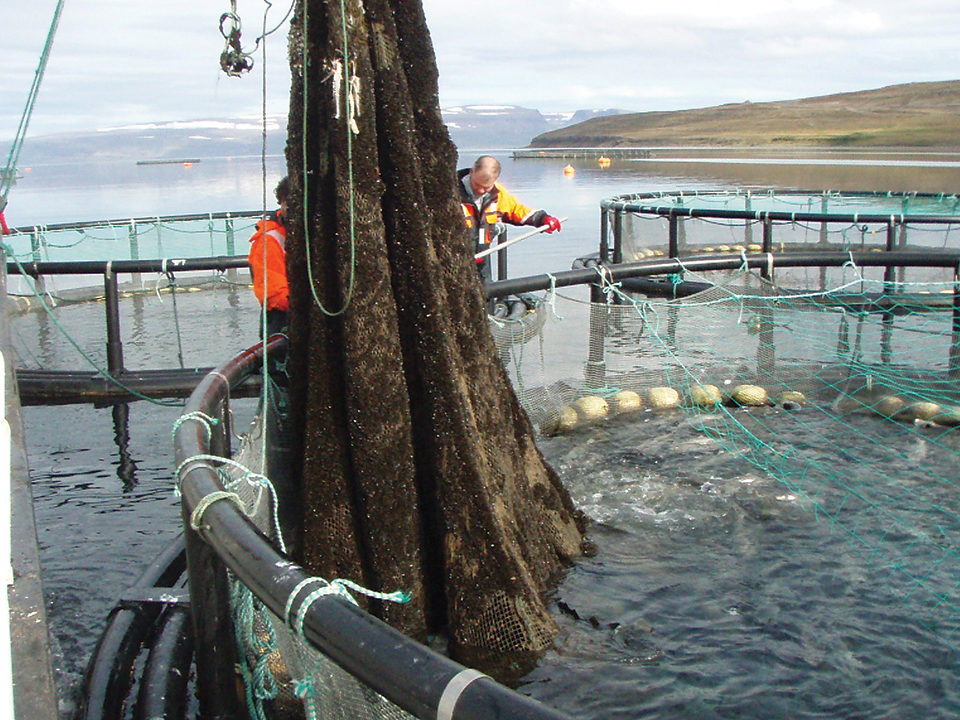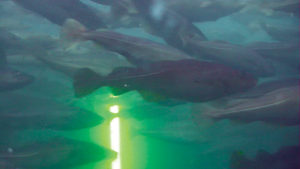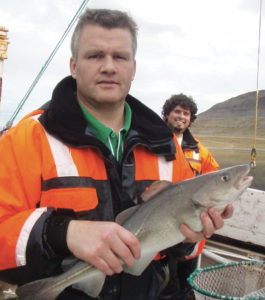Sexual maturation associated with loss of weight, appetite during spawning

Sexual maturation in bony fish is controlled by endogenous hormonal rhythms. Spawning takes place at the same time every year and is mainly controlled by the natural photoperiod.
In nature, Atlantic cod (Gadus morhua L.) mature at the age of 4-6 years or even older. Cod may, however, mature at 2 years under farming conditions. Sexual maturation down to the size of 500 g has been reported in farmed cod, with immense negative impacts on commercial farming.
The sexual maturation of Atlantic cod is associated with loss of weight as well as appetite during spawning. During one spawning season, large and well-fed female Atlantic cod can lose up to 25 percent of their weight. As a consequence, prolonged production time is needed to reach the optimal harvesting size of 3-5 kg. Sexual maturation also negatively affects feed-conversion efficiency and leads to increased mortality
Photoperiod manipulation

Photoperiod is an environmental regulator of growth and sexual maturation in Atlantic cod as well as other species of fish. Regulatory mechanisms of growth, early maturation and the effects of photoperiod have been studied during the development of various fish, including Atlantic halibut, Atlantic salmon and Eurasian perch. Results showed that an extended photoperiod leads to faster body growth, reduced gonadal growth and thus, a shorter production cycle.
Photoperiod manipulation – where light intensity and duration are controlled by the fish farmer – affects fish hormone levels, survival and growth rates, and is an important factor in the farming of a number of fish species. Photoperiod manipulation of broodstock fish is commonly applied for year-round seedstock production in commercial farming of Atlantic halibut, Atlantic salmon, rainbow trout, turbot, seabass and seabream.
Photoperiod manipulation also affects feeding behavior. It has been documented that most marine fish larvae are visual feeders, and the Atlantic cod is no exception. Suitable light levels and wavelengths are very important for successful larval growth. Atlantic cod seem to grow better under continuous light versus natural daylight cycles.
Wavelength effects

Cod farming procedures have focused on delaying or completely arresting sexual maturation, which results in an up to 25 percent increase in growth in addition to improved quality of the final product. Ongoing research projects conducted by the authors at Matís Ltd. in Iceland have showed that the use of photoperiod regulation does inhibit the sexual maturation of cod in sea cages as well as improve growth.
The lights most commonly used in cod farming are white metal halide lamps. This type of light is energy-intensive and therefore highly expensive. White light consists of many wavelengths – some of them pass well though water, such as the blue and green, while red and yellow lights do not penetrate water and are inadequate for illuminating larger areas.
Results have shown that fish are highly sensitive to the wavelength of 500-600 nm, the green-yellow spectrum of light. Moreover, light of these wavelengths is not absorbed by seawater and therefore penetrates the water well.
(Editor’s Note: This article was originally published in the November/December 2008 print edition of the Global Aquaculture Advocate
Now that you've finished reading the article ...
… we hope you’ll consider supporting our mission to document the evolution of the global aquaculture industry and share our vast network of contributors’ expansive knowledge every week.
By becoming a Global Seafood Alliance member, you’re ensuring that all of the pre-competitive work we do through member benefits, resources and events can continue. Individual membership costs just $50 a year. GSA individual and corporate members receive complimentary access to a series of GOAL virtual events beginning in April. Join now.
Not a GSA member? Join us.
Authors
-
T. Ágústsson, Ph.D.
Matís Ltd.
Department of Aquaculture
Division of Food Research, Innovation and Safety
Borgartún 21
IS-105 Reykjavík, Iceland -
G.S. Árnadóttir
Matís Ltd.
Department of Aquaculture
Division of Food Research, Innovation and Safety
Borgartún 21
IS-105 Reykjavík, Iceland -
F. Figueiredo
Matís Ltd.
Department of Aquaculture
Division of Food Research, Innovation and Safety
Borgartún 21
IS-105 Reykjavík, Iceland -
K. Hellman
Matís Ltd.
Department of Aquaculture
Division of Food Research, Innovation and Safety
Borgartún 21
IS-105 Reykjavík, Iceland -
J.G. Schram
Matís Ltd.
Department of Aquaculture
Division of Food Research, Innovation and Safety
Borgartún 21
IS-105 Reykjavík, Iceland -
R. Björnsdóttir
Matís Ltd.
Department of Aquaculture
Division of Food Research, Innovation and Safety
Borgartún 21
IS-105 Reykjavík, Iceland
Tagged With
Related Posts

Health & Welfare
Advances in intensive copepod production technology
Research at the Oceanic Institute has been successful in overcoming bottlenecks associated with rearing small-mouthed fish larvae by finding a suitable first feed. Early work on the calanoid copepod Parvocalanus crassirostris focused on parameters necessary for successful maintenance of stock cultures.

Health & Welfare
Advances in yellowtail larval rearing
The University of the Canary Islands in Spain is researching yellowtail broodstock management and larval rearing to promote aquaculture diversification in Europe.

Aquafeeds
Algae alternative: Chlorella studied as protein source in tilapia feeds
Chlorella and other species have potential as protein sources in aquafeeds. In trials with tilapia fry raised in a recirculating system, the fish received a fishmeal-based control diet or feeds with portions of the fishmeal replaced by Chlorella.

Intelligence
Aquaculture UK: Stepping up to the plate
There’s considerable opportunity to grow the UK aquaculture industry. At the Aquaculture UK exhibition and conference in Aviemore, Scotland shows the way.


